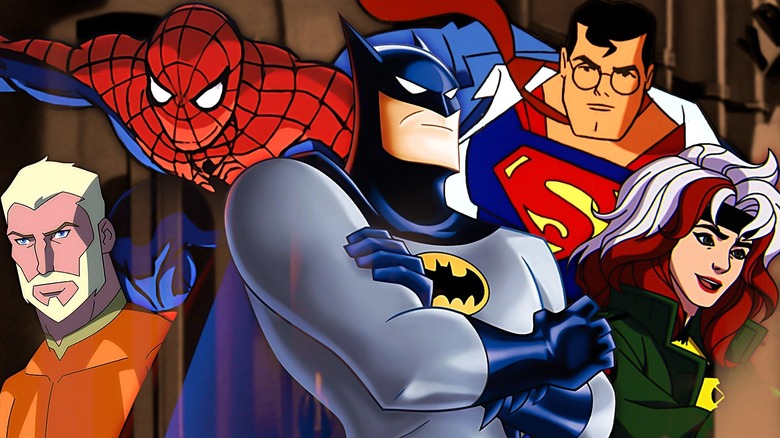
Live-action superhero movies may dominate the box office, but there's something to be said about adapting a beloved hero into an animated television series. A 22-episode season (remember those?) allows for a greater variety of stories to be told week to week (instead of waiting years on end to get a sequel). And while Marvel has (somewhat) perfected the idea of a cinematic universe, an animated series can dive into the wilder, often stranger mythos of these characters without getting bogged down
in questions like, "Will this alienate a wider audience?"
With that in mind, it's no wonder why there have been so many acclaimed DC and Marvel cartoons over the years. Some might say these animated adaptations are the definitive source for these characters, perfectly translating them into another medium without losing what made them special in the first place. With an equal representation from each of the big names in the world of comics, here are the best Marvel and DC animated shows you've probably already seen but should rewatch just to remember how great they all are.
Read more: 5 Reasons Why Joker 2 Flopped At The Box Office
Young Justice
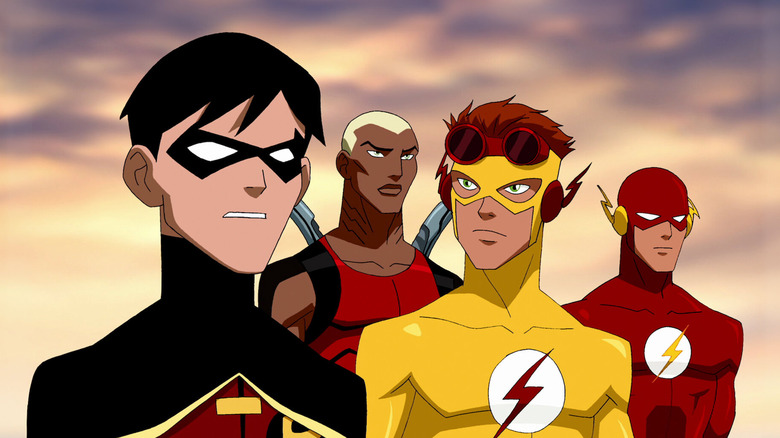
When "Young Justice" first came on Cartoon Network in 2010, it felt a little like the network trying to recapture some of that "Teen Titans" magic but with a different subset of young superheroes. The big difference between the two shows (at least in those early seasons) is that the primary Justice League, filled with the teenagers' mentors, play an active role. The other change would manifest over time, as these heroes grow up, and the show steadily becomes darker in subject matter.
For instance, Robin (Jesse McCartney) becomes Nightwing in season 2, and members frequently retire and get back into the action. Cartoon Network would cancel "Young Justice" due to low toy sales, but it would get picked up by DC Universe and HBO Max for season 3 and 4, respectively. For the latter two seasons, it definitely felt like the creative team had more leeway to dive into more sociopolitical territory and introduce characters not typically known by mainstream audiences, like Halo (Zehra Fazal). "Young Justice" grew up with its audience, tackling more sophisticated storylines to make it unlike anything else in DC's animated canon.
Moon Girl And Devil Dinosaur
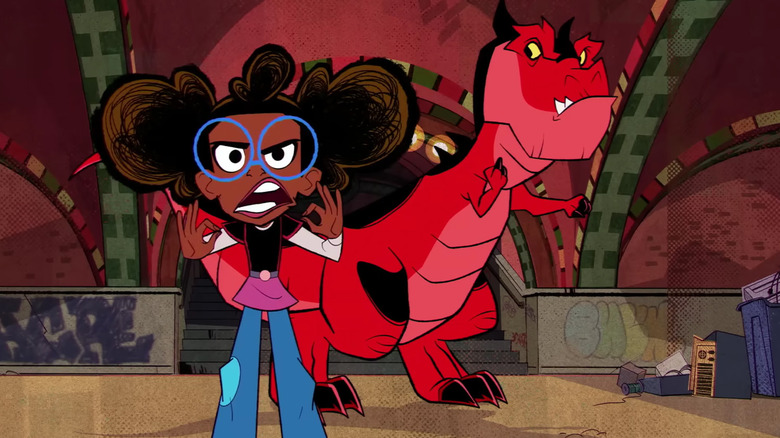
Since it airs on Disney Channel, "Moon Girl and Devil Dinosaur" is definitely made with a younger audience in mind. You can probably tell that from the bright visuals and dynamic animation. But don't allow that to make you overlook this gem. The show gets very emotional at points, as Lunella Lafayette (Diamond White) attempts to juggle her superhero duties with being a regular kid and daughter. The episodes following when her mother discovers her secret superhero identity can be downright heartbreaking, but don't let that fool you. "Moon Girl and Devil Dinosaur" is a ton of fun, especially when it brings in the Beyonder (Laurence Fishburne) as the most annoying villain in the universe.
Lunella, aka Moon Girl, fights crime with her trusty sidekick, Devil Dinosaur (Fred Tatasciore), and each episode features a fight sequence set to a killer needle drop. It also manages to be incredibly inclusive, showing off a version of New York City that feels true to life. Lunella's identity as a young Black girl isn't pushed to the side; it's integral to many episodes.
The Spectacular Spider-Man
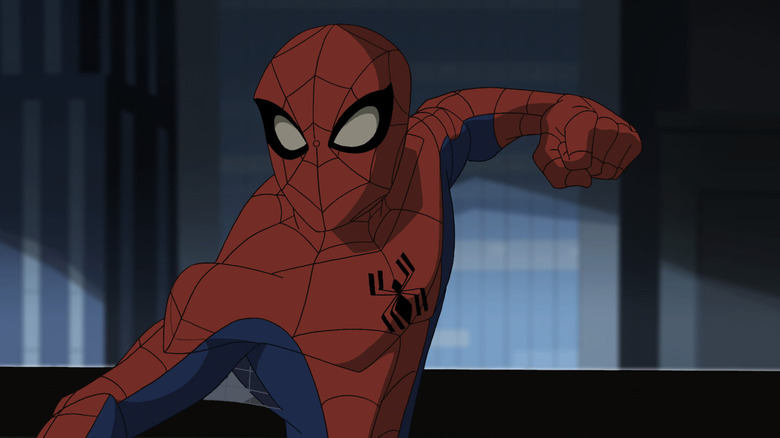
We'll get to the '90s "Spider-Man cartoon in a little bit, but we'd be remiss not to give flowers to "The Spectacular Spider-Man," which remains one of the best adaptations of the web-head. It's a wonderfully faithful cartoon where Spidey (Josh Keaton) fights some of his greatest villains. Even though there are only 26 episodes total throughout the series, many characters feel fully fleshed out, like Eddie Brock going from one of Peter Parker's friends to attaining the Venom symbiote by the end of season 1.
Arguably, the greatest achievement by "The Spectacular Spider-Man" is how it has the best version of Mary Jane Watson (Vanessa Marshall) outside of the comics. She's independent and could've become even more crucial to Peter's life had the show not been cancelled after two seasons. "The Spectacular Spider-Man" feels like a true love letter to the character's early comics from Stan Lee and Steve Ditko, simply updated to the modern era.
Superman: The Animated Series
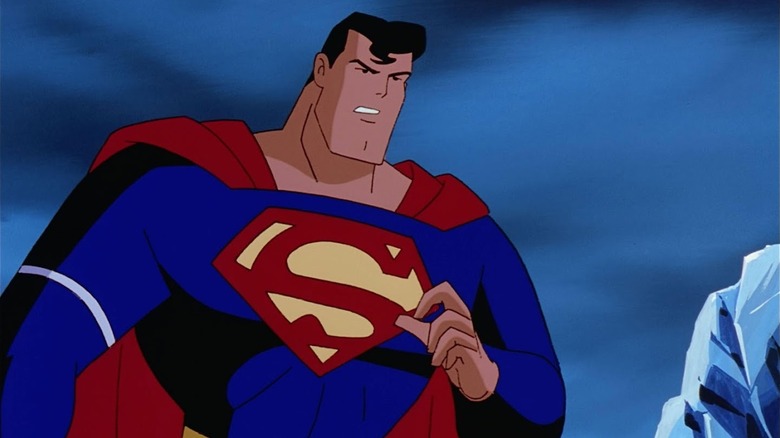
Like "Batman: The Animated Series" before it, "Superman: The Animated Series" feels like an ideal distillation of what makes Clark Kent (Tim Daly) incredible. He portrays hope and optimism while fighting an eclectic array of bad guys. Naturally, Lex Luthor (Clancy Brown) remains front and center throughout numerous storylines, but the show wasn't afraid to get more esoteric with its comic book influences, with the best episodes of "Superman: The Animated Series" getting everyone from Darkseid (Michael Ironside) to Lobo (Brad Garrett) in on the action.
In addition to all that, "Superman: The Animated Series" also set the stage for what was to come in DC's animated universe leading up to "Justice League" and "Justice League Unlimited." He crossed over with Batman on several occasions and even met up with the Kyle Rayner Green Lantern. But the show lives or dies by its portrayal of Superman, who always wants the best for everyone, including his villains. He frequently tries to meet bad guys on their level and show them compassion when possible. That's the Man of Steel we want guiding us all.
Avengers: Earth's Mightiest Heroes
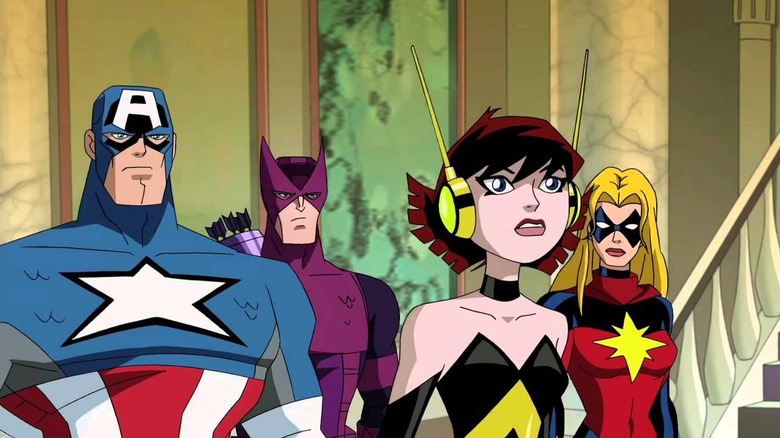
The greatest sin "Avengers: Earth's Mightiest Heroes" committed was debuting just two years before "Avengers" blew up the global box office. The show was cancelled after just two seasons to make room for "Avengers Assemble," which featured the same team line-up as the films, probably to promote corporate synergy, but "Earth's Mightiest Heroes" remains the far superior show.
Its utilization of serialized storytelling allowed for more complex plots that one wouldn't necessarily expect from comic book shows. For instance, there's a great "Secret Invasion"-inspired arc where Captain America (Brian Bloom) gets replaced with a Skrull, and it's a million times better than the Disney+ "Secret Invasion" show. And the creators had ample ideas for future seasons, including bringing the X-Men into the mix and adapting "Secret Wars." Given the quality of the two seasons we have, there's little doubt these ideas would've been executed splendidly. Maybe the Marvel Cinematic Universe was just worried a cartoon would do these storylines better than the live-action films.
Teen Titans
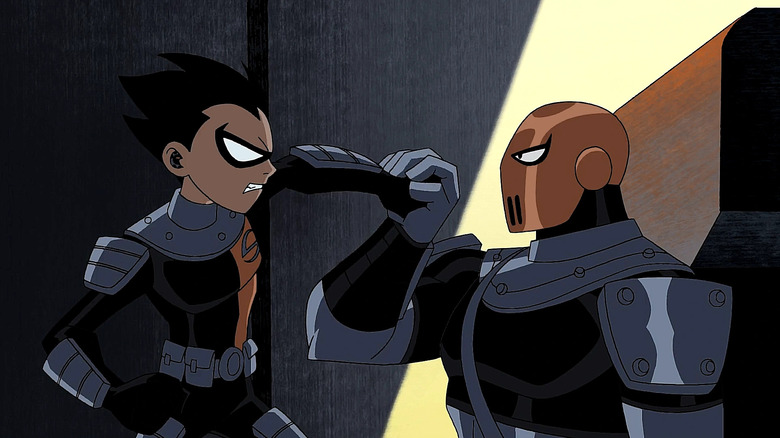
"Teen Titans Go!" may be the longest running DC cartoon in history, but with all due respect, it doesn't hold a candle to the majesty of the original "Teen Titans" cartoon in the 2000s. The series felt like an extension of the DC Animation Universe from "Batman: The Animated Series" and "Justice League" (despite seemingly being set in another reality) but with some fun twists. It merged Western animation with anime influences for a style wholly its own. Even though the characters deal with silly issues all teens have to contend with, the show wasn't afraid to get dark.
Watching "Teen Titans" as a kid is also the ultimate in wish fulfillment. Robin (Scott Menville) wasn't just Batman's sidekick; he was his own fully formed character leading a team. As a whole, the characters developed their own found family and didn't have adults telling them what to do. Perhaps they could've benefitted from some guidance, but a significant part of coming of age is learning to find your own way in this world. What teen doesn't feel like an outcast at one point or another, making them relate to Cyborg (Khary Payton) or Starfire (Hynden Walch)? "Teen Titans" struck a perfect balance between humor and drama, so there was always an episode for no matter how you were feeling.
X-Men: The Animated Series
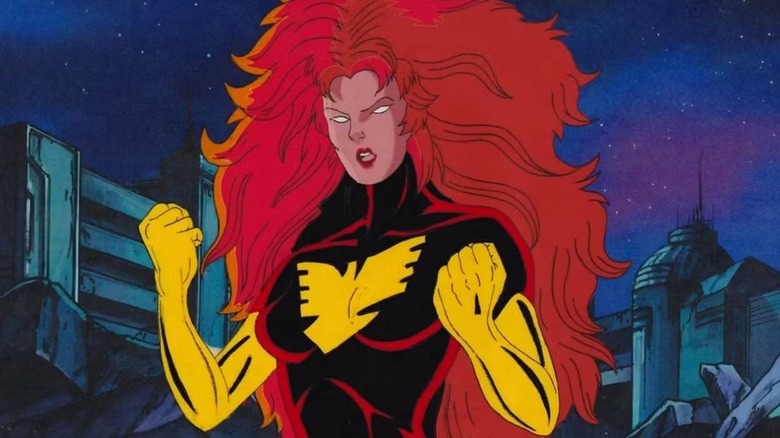
Go back to a simpler time: It's the early '90s. You have a big bowl of cereal in front of you, and you turn on the TV to hear the iconic "X-Men: The Animated Series" theme song, knowing you're in for a wild ride for the next 30 minutes. With the one-two punch of "X-Men" and "Batman" in 1992, kids who maybe had never picked up a comic book before were introduced to some stellar adaptations. "X-Men: The Animated Series" didn't waste any time dropping viewers into a wildly fantastical world, as the very first episode drops you right in the middle of the action with Jubilee (Alyson Court) trying to outrun Sentinels.
"X-Men: The Animated Series" wasn't just a great show; it set the standard for many future adaptations. The 2000s "X-Men" films drew heavily from the cartoon, like Wolverine (Cal Dodd) being in a love triangle with Jean Grey (Catherine Disher) and Cyclops (Norm Spencer). Plus, the show wasn't afraid to tackle the more sociopolitical concepts associated with the team. Society is fearful of mutants, and the series doesn't shy away from putting that prejudice on full display. And it's worth saying that the cartoon did a pretty great job showcasing the "Dark Phoenix" arc, something the live-action films have failed at ... twice.
Batman Beyond
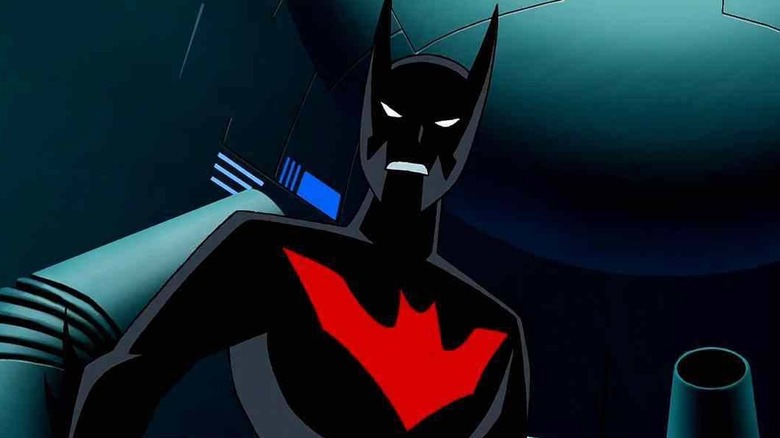
It's astonishing to think that "Batman Beyond" was created in a moment of desperation where Warner Bros. wanted another Batman cartoon, and Bruce Timm came up with the idea of a futuristic Gotham with a brand new Caped Crusader. This version of Gotham is straight out of "Blade Runner" and sees a retired Bruce Wayne (Kevin Conroy) mentoring a new iteration of the Dark Knight, Terry McGinnis (Will Friedle). Terry is more akin to Peter Parker than Bruce Wayne, offering quips whenever possible to his adversaries, and his rogues' gallery is incredibly underrated. Many of Batman's old foes are out of the picture, but Terry gets to fight against the skeletal Blight (Sherman Howard) and the seductive Inque (Shannon Kenny).
Even when "Batman Beyond" does go back to well-trodden territory, the legacy characters are done justice. Out of anyone, it makes sense Victor Fries (Michael Ansara) is still around and actually gets a chance to redeem himself. Amazingly, out of all the DC animated projects, "Batman Beyond" has a surprising amount of body horror, with dark imagery permeating many of the best episodes. It's honestly the perfect follow-up to "Batman: The Animated Series," and we'll forever be heartbroken that the "Batman Beyond" animated film never came to fruition.
Spider-Man: The Animated Series
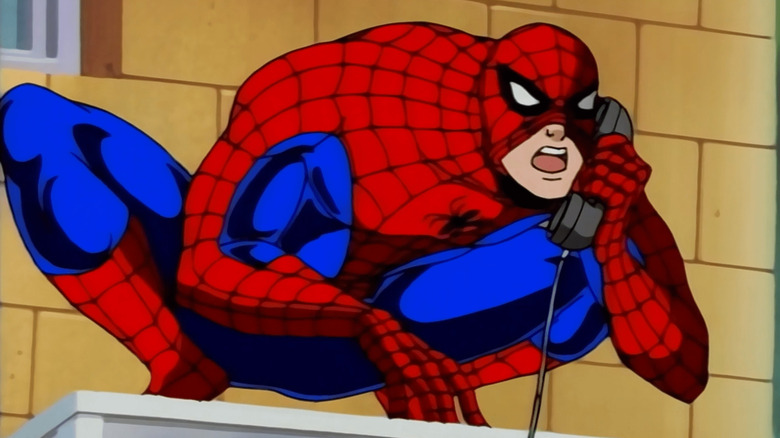
The 1990s were a true golden era for superhero animation, and while some episodes may seem campy by today's standards, "Spider-Man: The Animated Series" is a great adaptation of the web-head. The flagship Marvel hero has plenty of cartoons to pull from, with many choosing to focus on certain villains or aspects of the character. But the '90s show puts everything on the table with comic-accurate depictions of some of the best Spider-Man (Christopher Daniel Barnes) villains.
Of course, some changes were necessary, but that only gave the show more of a distinctive flair. For example, the vampiric Morbius (Nick Jameson) has hand suckers that draw plasma out of his victims rather than sucking blood through the neck like a regular vampire would. This actually made the character more disgusting in a sense, but to each their own.
"Spider-Man: The Animated Series" also ended on a Spider-Verse arc where our regular Peter Parker meets up with Spider-Men from across the multiverse. No doubt this played a role in the superhero becoming pretty much synonymous with multiversal concepts that have come to define him in movies like "Spider-Man: Into the Spider-Verse" and "Spider-Man: No Way Home." Next to Batman, Spider-Man probably has more animated shows out of any Marvel or DC hero, but the '90s definitely represent the peak of his cartoon form.
X-Men '97
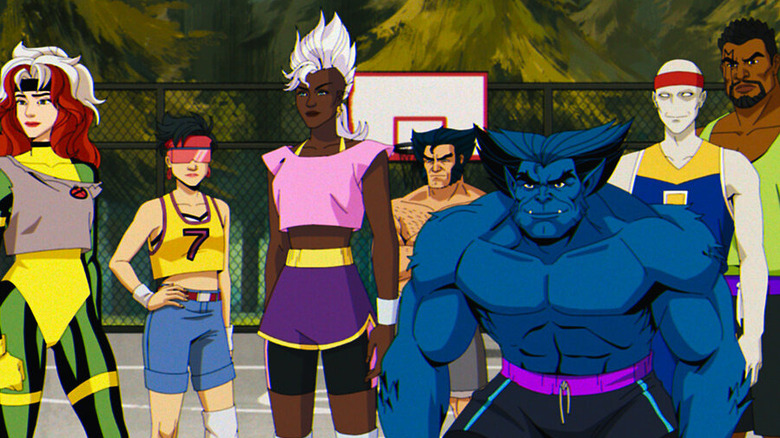
Is it too early to call "X-Men '97" one of the best Marvel animated shows of all time? It only has one season under its belt at this time, and for all we know, future seasons could completely whiff what that season accomplished. But even if subsequent seasons prove to be disappointments, there's no denying that "X-Men '97" season 1 represents some of the best superhero television of any kind, animated or live-action.
The series picks up after the events of "X-Men: The Animated Series," with Charles Xavier (Ross Marquand) still missing in action. In his place, Magneto (Matthew Waterson) continues the fight for mutant liberation, offering one of the most poignant superhero speeches ever in episode 2, "Mutant Liberation Begins." Tackling more serious topics would become a frequent aspect of the show, as the series would go on to adapt one of the darkest Marvel storylines in the comics when Master Mold and an army of Sentinels wipe out a mutant safe haven, killing Gambit (A.J. LoCascio) in the process.
The series earns its TV-14 label, a higher level from its Saturday morning cartoon rating of TV-Y7. This is a show made for the people who grew up watching the original cartoon and can handle more depth and darkness, and if "X-Men '97" keeps up this quality, it could rank even higher on future lists.
Justice League/Justice League Unlimited
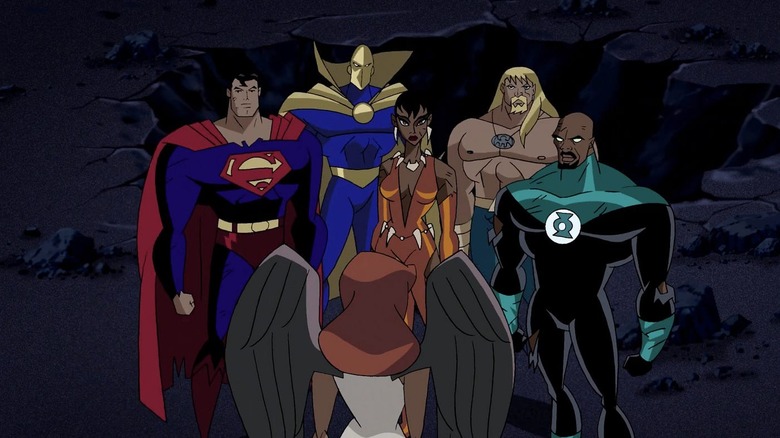
Both the '90s "Batman" and "Superman" cartoons felt like they were leading up to something much grander. "Justice League" brings those characters, and a bunch of others who would become fan-favorites, into the limelight with "Justice League." The series consisted of two- and three-episode story arcs where various members of the team, which also included Green Lantern (Phil LaMarr), Wonder Woman (Susan Eisenberg), and Flash (Michael Rosenbaum), have to stop whatever villain is causing mayhem that week. Villains like Lex Luthor and Darkseid were still around, but it was great to see them interacting with a new set of heroes. Every duology felt like an event because it kind of was.
The successor series, "Justice League Unlimited," expanded the show's horizons even further. Instead of only having seven members in the Justice League, there are now dozens. Instead of having two-parters, "Unlimited" focused more on overarching storylines, giving lesser-known heroes time to shine. All of this was wrapped in a post-9/11 arc about the government being inherently distrustful by all-powerful entities looking over the planet in a spaceship. The truth is that "Justice League" and "Justice League Unlimited" haven't aged a day. With stunning animation and mature storylines that kids can still follow, you could've put these shows out today, and they probably would've been even more popular than they would back in the 2000s.
Batman: The Animated Series
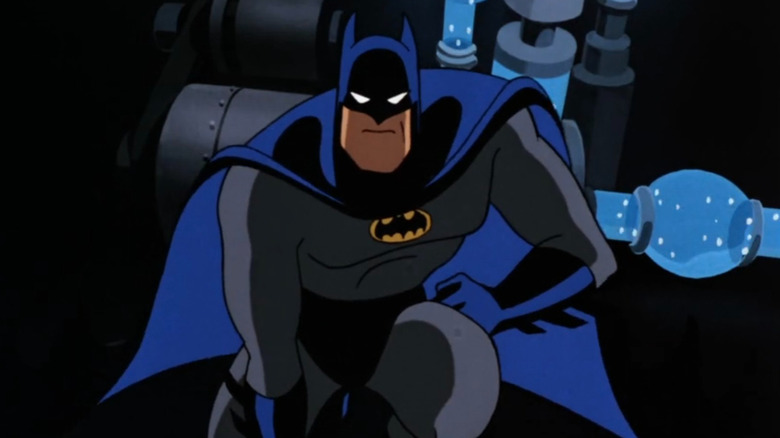
"Batman: The Animated Series" isn't just the best Marvel or DC animated series; it set the template for the Caped Crusader going forward. Fans may be hesitant to accept changes in modern comic book TV shows, but the '90s cartoon really changed things for the better. Most notably, this can be seen in the character of Mr. Freeze in "Heart of Ice." Mr. Freeze was little more than a gimmick villain previously, but the episode gave him a tragic backstory of wanting to save his wife, something that was adapted into the feature film, "Batman & Robin." Perhaps the show's greatest contribution to Batman's mythos is creating Harley Quinn (Arleen Sorkin), who'd go on to get her own comic line and feature in other Batman cartoons and movies.
But "Batman: The Animated Series" wasn't trying to upend tradition. It took Batman and his villains and gave them stories befitting of what fans had known previously. It also made them palatable to general audiences who were maybe getting introduced to Batman for the first time through this show. There have been plenty of Batman cartoons since, and they all feel like they owe a debt to the '90s series.
And let's be honest, when you read a "Batman" comic, there's a very good chance the voice you hear for Bruce Wayne is the late, great Kevin Conroy. Many superhero shows wouldn't exist without the comics, but it kind of feels like later comics just wouldn't be the same if "Batman: The Animated Series" never came to pass.
If you're looking for the easiest way to keep up with all the major movie and TV news, why not sign up to our free newsletter?
Read the original article on SlashFilm.












